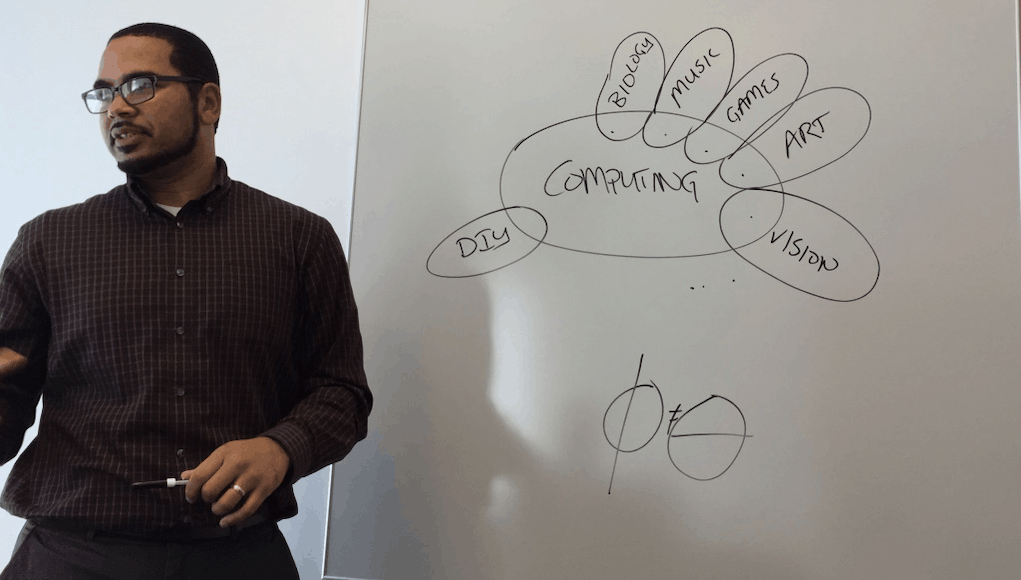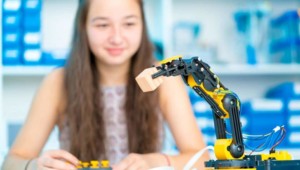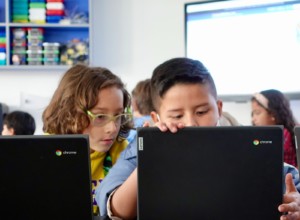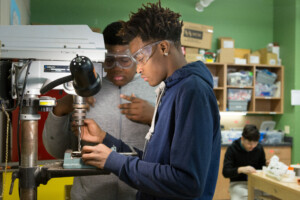What K-12 Students Should Know About Artificial Intelligence

Machines that learn are reshaping lives and livelihoods. Artificial intelligence (AI) is the most important change force in modern society but it remains common for high school graduate to know nothing about how it works, the opportunities it creates, and what we need guard against.
In May, the Association for the Advancement of Artificial Intelligence (AAAI) and the Computer Science Teachers Association (CSTA) launched the AI for K-12 Working Group (AI4K12) to define for artificial intelligence what students should know and be able to do.
The AI4K12 steering committee includes David Touretzky, Carnegie Mellon; Christina Gardner-McCune, University of Florida; Fred Martin, University of Massachusetts; and Deborah Seehorn, CSTA Curriculum Committee.
With lots of input, the steering committee drafted five big ideas that every student should know. A summary of the report (available here) they will present at the AAAI conference in January follows.
Big Idea #1: Computers perceive the world using sensors. The ability of computers to “see” and “hear” well enough to be practically useful is one of the most significant achievements of AI. Students should understand that machine perception of spoken language or visual imagery requires extensive domain knowledge. Graduates should be able identify and demonstrate the limitations of machine perception systems and use open machine learning tools to train perceptual classifiers.
Big Idea #2: Agents maintain models/representations of the world and use them for reasoning. Representation is one of the fundamental problems of intelligence, both natural and artificial. Students should understand the concept of a representation–the way a map represents a territory, or a diagram represents a board game. Students should further understand that computers construct representations using data, and these representations can be manipulated by applying reasoning algorithms that derive new information from what is already known. High school students should be able to make use of elementary data structures to program simple inference algorithms.
Big Idea #3: Computers can learn from data. Machine learning algorithms allow computers to create their own representations using training data that is either supplied by people or acquired by the machine itself. High school students should be able to train a network and code simple applications using open tools.
Big Idea #4: Making agents interact naturally with humans is a substantial challenge for AI developers. Understanding people is one of the hardest problems faced by intelligent agents. Inferring a person’s future intentions by observing their actions is challenging even for humans. Robots will need to acquire some of this skill if they are to be welcome in our lives.
High school students should be able to construct context-free grammars to parse simple languages and use open tools to construct a chatbot. They should also be able to use sentiment analysis tools to extract emotional tone from text.
Big Idea #5: AI applications can impact society in both positive and negative ways. Students should be able to identify ways that AI is contributing to their lives. The societal impacts of AI involve two kinds of questions: what applications should AI be used for and what ethical criteria should AI systems be required to meet?
Students should understand that the ethical construction of AI systems that make decisions affecting people’s lives requires attention to the issues of transparency and fairness.
High school students should be able to evaluate new AI technologies and describe the ethical or societal impact questions raised by them.
AI4K12 will not be developing guidelines but not curriculum. They plan to curate online resources for educators. They welcome feedback (leave a comment below).
For more, see:
- Why Social Studies is Becoming AI Studies
- Let’s Talk About AI Ethics; We’re On a Deadline
- Curbing Killer Robots And Other Misuses of AI
This post was originally published on Forbes.
Stay in-the-know with innovations in learning by signing up for the weekly Smart Update.








syedimran
Thank you for sharing this wonderful information